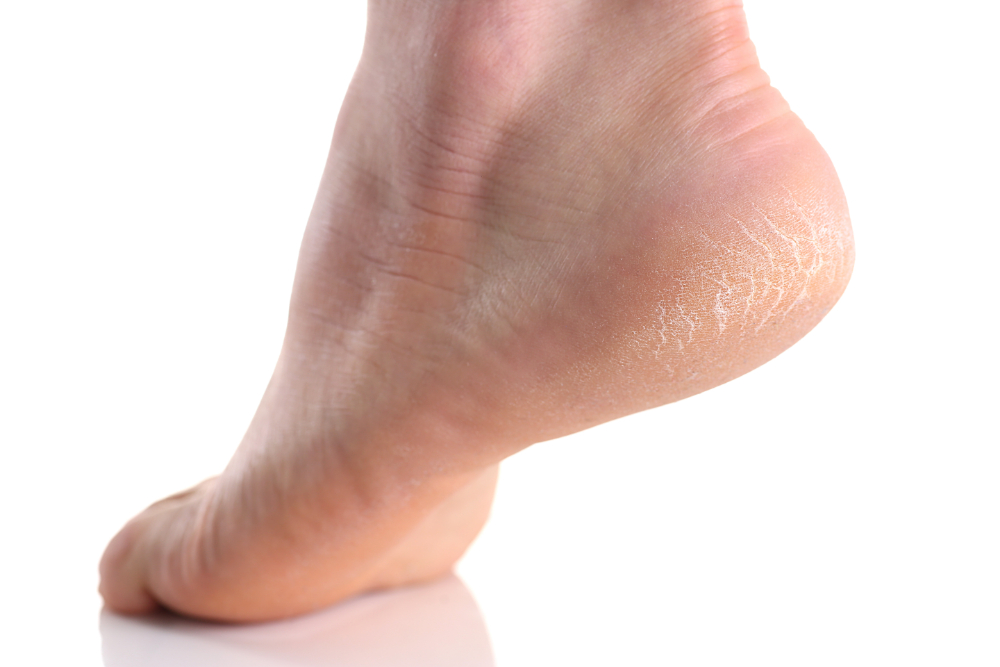Heel Fissures: How To Heal Your Heels
Heel fissures appear as dry, cracked grooves on the bottom of the feet. Just like a series of rivers, they intertwine along the heel, resulting in a cosmetically unappealing appearance. However, in this case, beauty is more than skin deep. This condition is more than an ugly nuisance, it can be symptomatic of, or even cause, further health problems.
Effects
If they become deep enough, heel fissures can begin to bleed. This makes walking, running, and even standing painful. The open wounds leave the body exposed to bacteria and other harmful substances and injuries. As with many other feet and ankle conditions, untreated heel fissures can lead to dangerous infections and serious agony for sufferers. Those with health issues such as diabetes or impaired immune systems are at an increased risk. Additionally, they are more prone to complications without proper care.
What Exactly Are the Causes?
Going barefoot on a regular basis, or wearing open-backed shoes, exposes your feet to the environment as well as hard surfaces. Naturally, this leads to wear and tear on the skin and heels that can result in dreaded fissures. If you live in a particular hot and dry climate, this only increases your chances of developing these cracks on the bottom of your feet. Other causes include medical conditions, like inactive sweat glands in your feet for instance. Normally, your sweat works as Mother Nature’s way of balancing your feet’s moisture levels. However, with inactive sweat glands, the feet remain dry. They begin to rub against areas without protection from hard surfaces and arid climates.
Prevention and Treatment
As with other injuries, the best cure is always prevention. Moisturize your feet often, preferably once or twice a day. Try grandma’s old trick and apply a simple cream or lotion to your feet, then cover them with socks each night. You will be saving your heels as you sleep!
When outdoors, try to avoid going barefoot for extended periods of time. Also, don’t make sandals your day-to-day footwear. Not only do they leave your heels exposed and unprotected, they do not always provide the support your feet need. Make sure your feet are covered in shock-absorbing shoes that fit well and feel comfortable. You wouldn’t drive a car that’s unsafe, so why wear shoes that aren’t good for you?
If you already suffer from Heel Fissures or dry heels there are a few at-home remedies that work to remove the dead, dry skin. Pumice stones can do wonders! Soak your feet in a luxurious warm bath. This will help to prepare the skin for exfoliation. After you have finished your foot bath, rub the pumice stone against your skin with a fair amount of pressure. Do not press too hard, as you do not want to injure your heel. Simply move the stone in a circular motion, allowing the dead skin to fall away.
Repeat this once a day, and always apply a moisturizing cream afterward.
If heel fissures persist, or if you have any further questions, feel free to contact Dr. Victoria Melhuish at (775) 783-8037. Make an appointment at Sierra Foot and Ankle in Carson City, NV today.
Get In Touch
Address
2350 South Carson St
Suite 3
Carson City, NV 89701
Contact
Call: (775) 783-8037
Fax: (775) 782-3787
OPT-IN To Text:
By texting our office at
(775) 783-8037 from your mobile phone, you are consenting to receive SMS text messages from our staff. Reply STOP to unsubscribe.
*Read our Privacy Policy & Terms and Conditions.
Social




© Sierra Foot & Ankle. All Rights Reserved. Privacy Policy.
Web Design by CP Solutions. Marketed by VMD Services.

